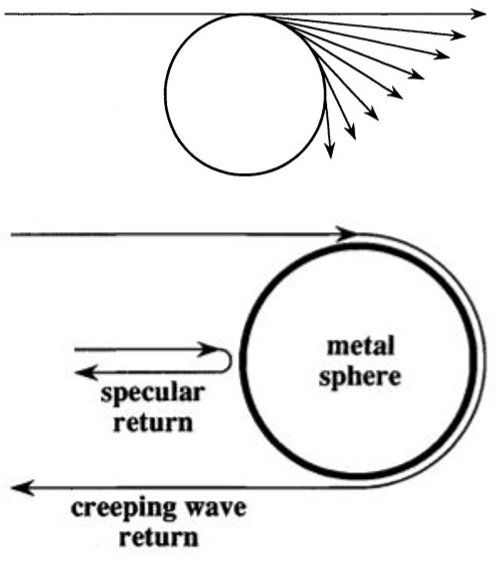T-50/Pak-Fa IRST is not stealthy.
Do you see the giant radar return (see top diagram below) from a one-foot metal sphere? The T-50/Pak-Fa IRST is approximately a foot in diameter and should have a similar radar return.
How far away do you think an AWACS can detect the T-50/Pak-Fa IRST? The IRST is clearly not stealthy and it is terrible stealth design to have a round sphere on the T-50/Pak-Fa nose.
How is it 'giant'? At what distance from the radar? Your argument failed spectacularly when it is well known that RCS is a variable figure based upon distance, power, and freq employed. From this respect, the RCS value is a 'fictitious' argument.
The reason why a sphere is usually used as a calibration body is because the sphere produce the most consistent reflected energy level regardless of incident angle, not because it set some kind of standard for 'stealth'.
Here is something way back in 1967 to support my argument...
Radar Signature Analysis, February 1967 Electronics World - RF Cafe
Radar Signature Analysis February 1967 Electronics World
Since a sphere looks like a sphere no matter how you view it, its radar cross-section will be a constant level with no variation because of different aspect angles. The cone and cylinder have more complicated returns because the strength of the echo will depend on the angle or aspect at which the beam strikes the object.
If the transmission is changed in anyway, such a change in freq or amplitude, the sphere is brought back in again to establish a new baseline.
But there is something call the '10-lambda rule' that will completely invalidate the calibration if the tester is not careful...
REGARDLESS of the freq employed, if the sphere's diameter is less than 10 lambda (wavelength) then the 'creeping wave' effect occurs. What happens is that a portion of the surface wave travels around the sphere and added its energy to that of the initial specular reflection. If the sphere is further smaller, we can have a pulsating radar echo from the sphere due to alternating constructive and destructive interference because the creeping wave continues to wrap around the sphere.
If the sphere is greater than 10-lambda, meaning its diameter is 11 or 12 times the wavelength under test, then there is no creeping wave effect, only leaky waves whose energy will be absorbed by the chamber walls that are lined with absorbers. This is why the 1 ft sphere is usually used, because its diameter is much larger than most wavelengths employed by civilian and military radars, enabling the tester to rapidly changes freqs without much cost.
So if a much more complex body than a sphere is introduced, rotating the complex body will reveal which aspect angle will produce a matching reflected energy level as the sphere's, which aspect angle produce the highest, and which aspect angle will produce the lowest. The sphere is used to establish a reference point for a
COMPLEX body, not to establish a threshold for 'stealth'.
Just in case anyone think I made up this '10-lambda rule'...
Look at the 'Introduction' paragraph. Look at the authors' names and where they came from.
Measuring radar cross sections in an anechoic chamber is a fundamental part of validating radar measurements.
So have
YOU done any? I have.









 Simply hilarious how your own sources constantly prove your claims to be wrong.
Simply hilarious how your own sources constantly prove your claims to be wrong.





